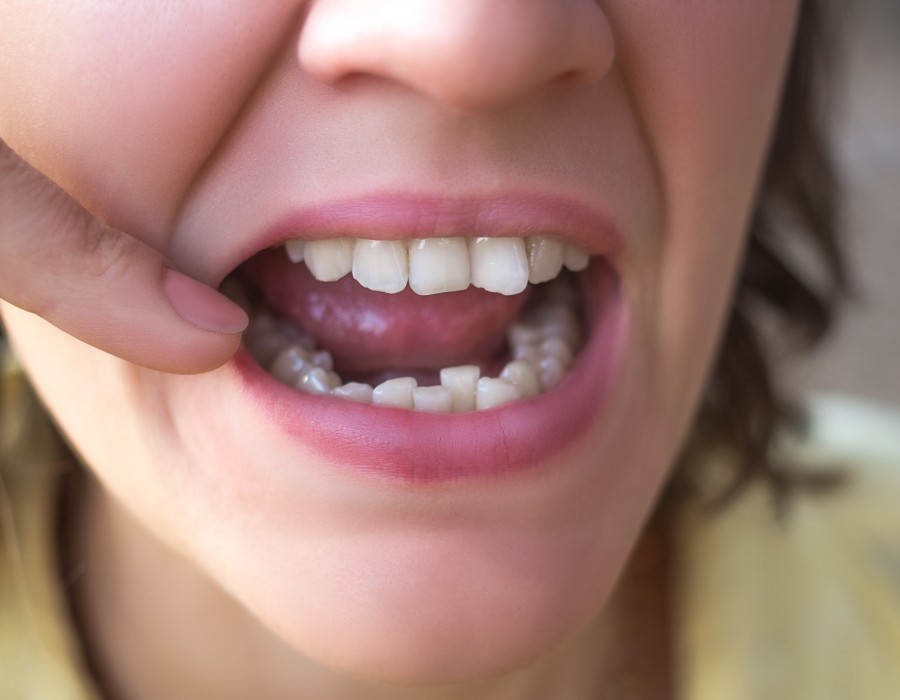Crowded teeth occur when there isn’t enough space in the mouth for all the teeth to align properly, leading to overlapping and misalignment. This can affect not only the appearance of your smile but also the functionality of your teeth and oral health. Fortunately, there are several effective Crowded Teeth Treatment options available that can help straighten your smile and improve both aesthetics and oral hygiene.
Causes of Crowded Teeth:
Understanding the causes of crowded teeth can help in finding the most suitable treatment plan. Several factors can contribute to misalignment, and knowing these can lead to more effective treatment solutions.
- Genetics: Often, crowding is inherited, and individuals may have naturally smaller jaws or larger teeth that don’t fit together properly.
- Early Tooth Loss: Losing baby teeth too early can cause adult teeth to erupt incorrectly, leading to misalignment.
- Thumb Sucking: Prolonged thumb-sucking or pacifier use during childhood can alter the natural position of the teeth.
- Trauma: Injuries to the mouth or teeth can shift their positions, leading to crowding and misalignment.
Traditional Braces: A Time-Tested Solution
Traditional metal braces remain one of the most reliable and effective treatments for crowded teeth. They work by using metal brackets and wires to gradually move the teeth into the correct position.
- How It Works: Braces apply continuous pressure to teeth, slowly shifting them into alignment over time.
- Pros of Traditional Braces: They are suitable for all cases of crowded teeth, including severe misalignments.
- Duration of Treatment: Depending on the severity, traditional braces treatment may take 18 months to 3 years.
Clear Aligners: Discreet and Comfortable
For those looking for a more aesthetic solution, clear aligners like Invisalign offer a popular alternative to traditional braces. These custom-made plastic trays gradually straighten the teeth without the use of metal components.
- How Clear Aligners Work: Clear aligners are worn over the teeth and are replaced every couple of weeks to move teeth step-by-step into proper alignment.
- Pros of Clear Aligners: Aligners are transparent, removable, and generally more comfortable than metal braces.
- Best for Mild to Moderate Cases: While clear aligners are effective for mild to moderate crowding, they may not be suitable for severe misalignment.
Palatal Expanders: Creating Space for Alignment
A palatal expander is a device designed to widen the upper jaw to create more space for teeth. It’s particularly helpful for patients with narrow palates contributing to crowded teeth.
- How It Works: A palatal expander gently applies pressure to the upper jaw, gradually widening it to accommodate the teeth.
- Best for Younger Patients: This treatment is most effective in children whose jawbones are still growing and developing.
- Treatment Duration: The device is typically worn for a few months, but results can last for years.
Cosmetic Dentistry Solutions:
For individuals with mild crowding, cosmetic dentistry provides a quick way to improve the appearance of their smile without undergoing long-term orthodontic treatment. Procedures like veneers and bonding can help reshape the teeth for a more uniform smile.
- Veneers: Thin porcelain shells placed over the teeth to correct shape, size, and alignment, providing an instant improvement.
- Bonding: Tooth-colored resin is applied to reshape teeth and fill in gaps, offering a non-invasive solution for minor crowding.
- Crowns: Crowns can be used to cover and reshape misaligned teeth, providing both aesthetic and functional improvements.
Retainers: Essential After Treatment
Whether you undergo braces, clear aligners, or another treatment, wearing a retainer after treatment is critical to maintaining the results. Retainers help ensure that your teeth stay in their new, aligned positions.
- Why Retainers Matter: After the teeth have been moved into place, the bones and gums need time to adjust. Retainers hold the teeth in place while this happens.
- Types of Retainers: There are several types of retainers, including fixed retainers (attached to the teeth) and removable ones (like clear plastic retainers).
- Duration of Use: Typically, retainers are worn full-time initially and then gradually reduced to part-time wear over time.
Conclusion:
There are several options available for treating Crowded Teeth Treatment, each suited to different needs and preferences. Traditional braces, clear aligners, palatal expanders, and cosmetic dentistry are all effective ways to achieve a straighter smile. It’s important to consult with your dentist or orthodontist to determine the best treatment plan for your specific case. With the right approach, you can straighten your smile, improve your dental health, and enjoy lasting results.





Comments